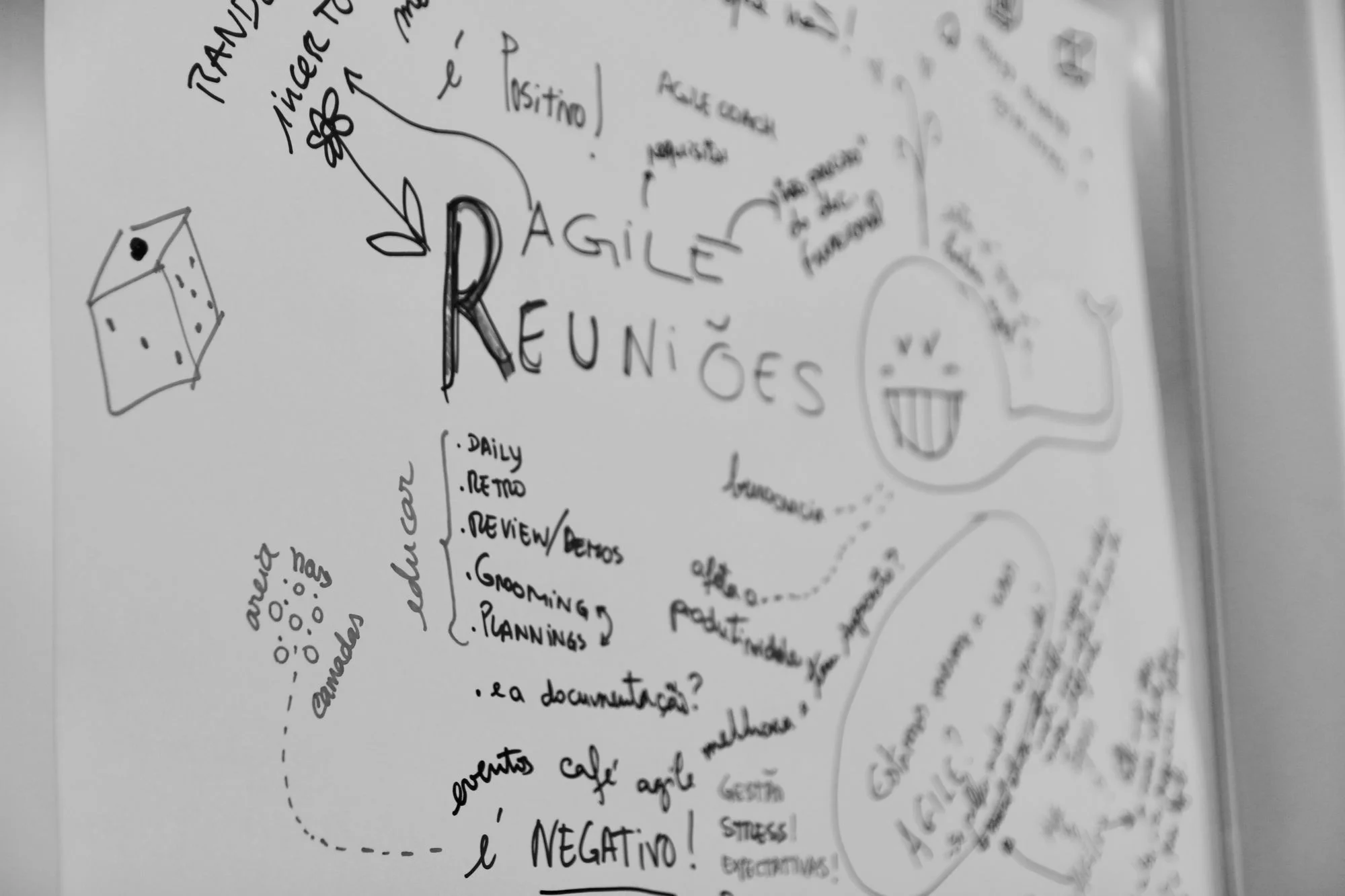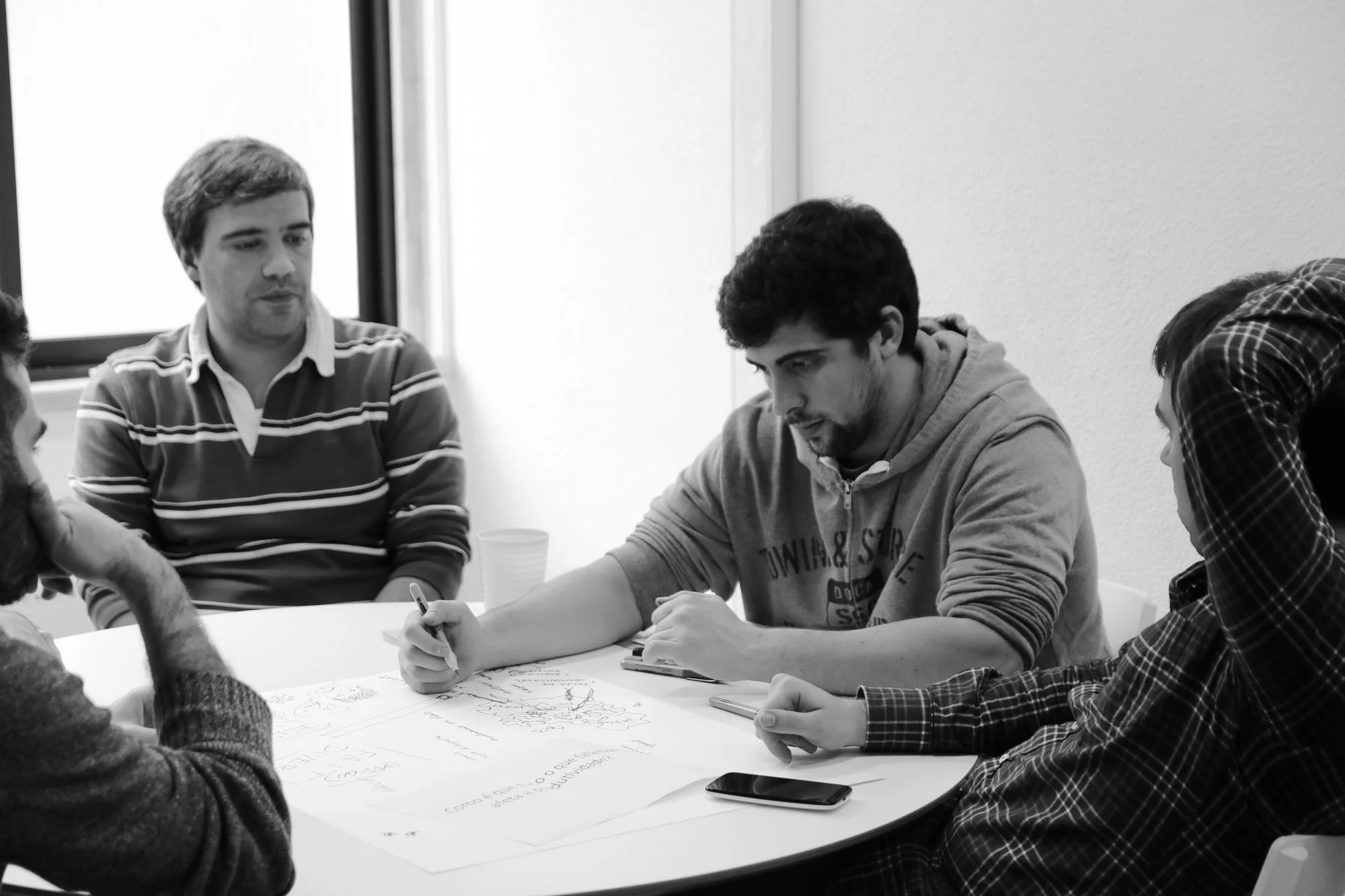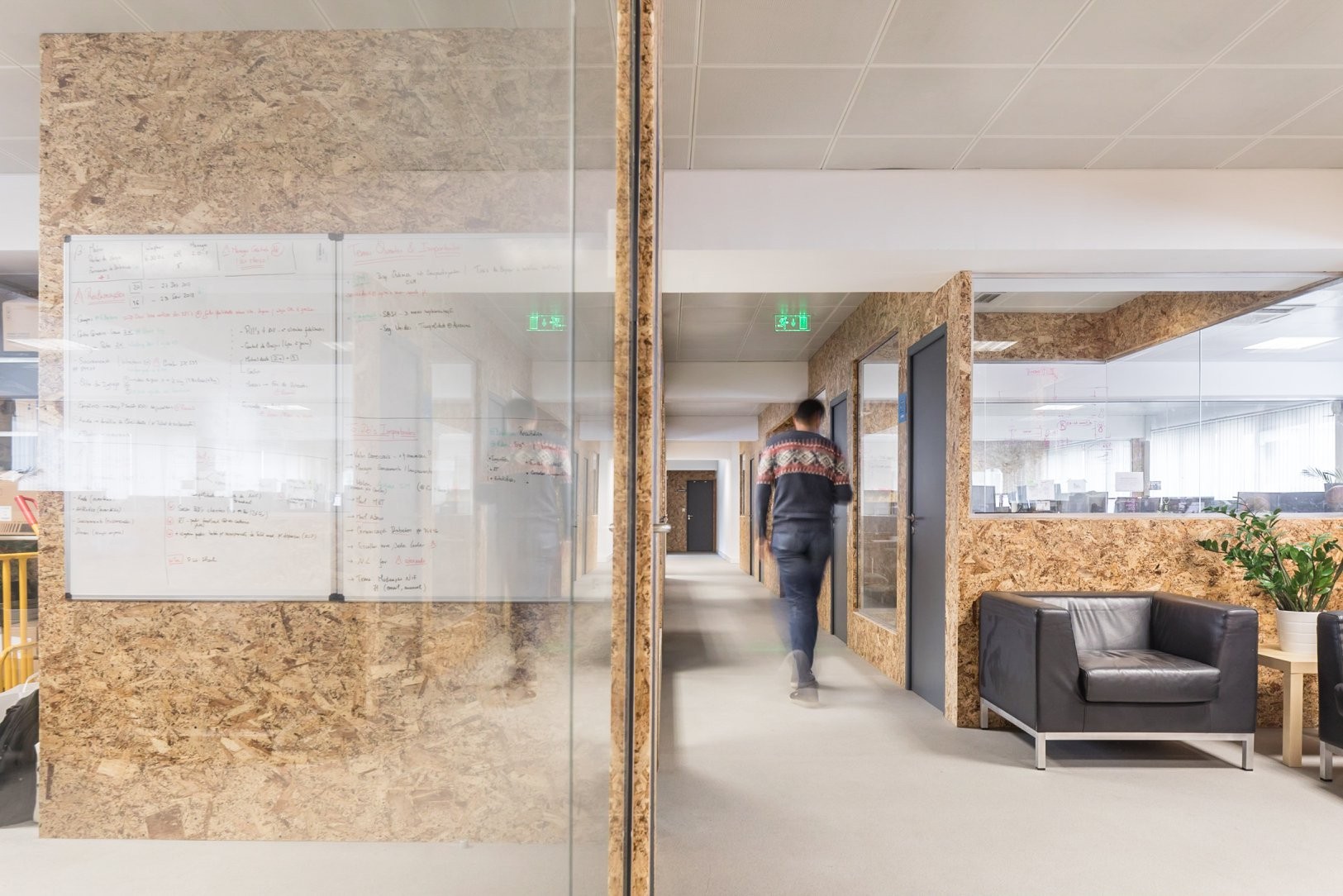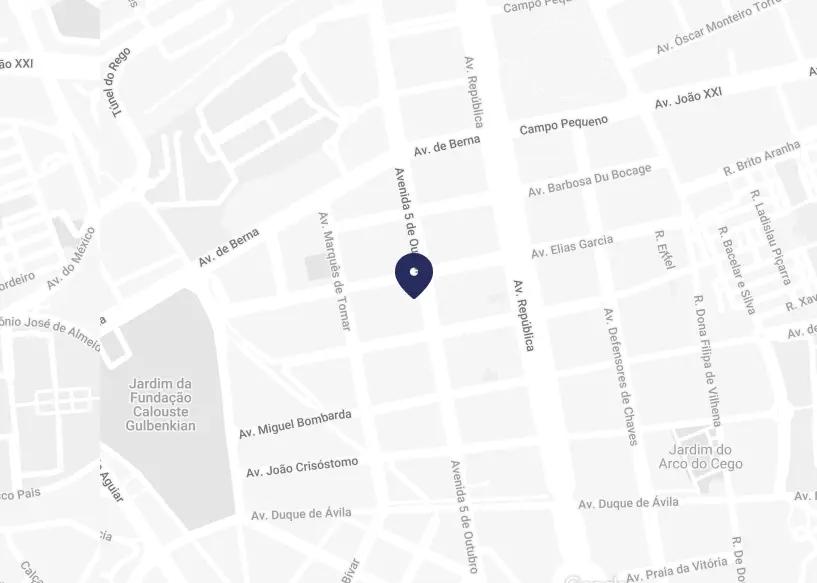Thirteen years ago, when we worked in an office the size of one of our current meeting rooms, I was the manager, developer, tester and devops engineer (at the time the term didn't even exist) of one of our projects. I didn't use any development methodology. I didn't even know what that was. The day another person started working on the project, the chaos began. Luckily, several people that came to work at Premium Minds introduced us to the Agile world.
Over the years, we have been experimenting and iterating until we got to our current model of Agile Coaching. This path of learning would not have been possible without the generosity of so many people in the world who share their experiences and ideas. In return, we are now sharing the document we currently hand to new Agile Coaches here at Premium Minds. This document explains our philosophy and the history behind it. We hope you find it useful. Questions and comments are welcome.
Introduction
The Agile Coach is a key element in our organizational structure. This document aims to clarify the role of an Agile Coach and outline a common work base.
What is the purpose of an Agile Coach?
The goal of an Agile Coach is to promote and care for team productivity and positivity. We believe that a productive and positive team is better prepared to overcome its challenges while giving room for professional and personal growth for each of its elements.
Productivity and positivity are concepts that cover a wide range of behaviors that can generally be understood as follows:
Productivity:
- Alignment of all team members towards their common purpose
- There are clear objectives and strategies
- There are clear and efficient decision-making processes
- There is leadership within the team, appropriate to each situation
- The team has all the resources and experience needed for their challenges
- There is responsibility for the commitments of each person and the team
- The team is proactive and approaches opportunities in a positive and creative way
Positivity:
- There is a safe space that promotes trust between people
- There is an environment of mutual respect and genuine positive regard
- There is a strong sense of belonging
- Clear and efficient communication is valued over "politicking"
- There is continuous feedback among colleagues, without criticism and defensiveness
- Different ideas, experiences and personalities are valued
- There are low levels of toxicity within communication
The Agile Coach is not expected to be responsible for this vast set of behaviors. The team itself should assume this responsibility, but it helps a lot to have an outside caretaker to promote these ideas and pay attention to areas where team members might have more difficulties.
It is desirable for the Agile Coach to be free from conflicts of interest with the different parts of the team. This exemption brings:
- A unique perspective of emerging issues
- The possibility to mediate and solve conflicts
- The ability to genuinely listen to each person, giving room for their vulnerabilities
The Agile Coach is inspired by the Agile philosophy and takes the Agile Manifesto into account.
What are the Agile Coach's tools?
Being an Agile Coach at Premium Minds is a part-time job that takes up to 8 hours a week from someone who has their own team, their own challenges and their own Agile Coach :). This option has advantages and disadvantages that will be discussed in the chapter "Why Premium Minds has Agile Coaches". However, we can already say that a direct effect of this option is that the Agile Coach is not always present with the team. For that reason, they use the O3 and team ceremonies as preferred opportunities to do their job.
At O3s and ceremonies, the Agile Coach uses mainly communication as the basic tool for their work. It is through communication that the Agile Coach helps each team member and the group to continually improve their productivity and positivity.
This means that the Agile Coach has to practice these three regularly:
- Empathy - the ability to put oneself in another's shoes without judgment, which helps understanding each person's context.
- Active Listening - listening without judgments creates the possibility of honest sharing of both successes and failures.
- Assertiveness - clarity in communicating helps reducing the normal entropy in relationships, stimulating focus on what is really important.
In addition to communication-related work, the Agile Coach can also contribute on:
Designing and implementing processes in the tools used by the team: Jira, Trello, Confluence... Using productivity metrics such as: Sprint Burndown Chart, Cumulative Flow Diagram, etc...
This kind of technical contribution varies according to the needs of the team and the proficiency/motivation of the Agile Coach. It's OK not to do everything. It is also OK to be challenged to do more.
What are O3s?
The O3s are One on One conversations. These are regular conversations that the Agile Coach has with each team member at least once a month. These conversations are primarily intended to create a safe space for the other person to be able to talk about what they need to talk about, whether personal or professional.
These discussions are very important, as they are the main means of regularly following-up with people at Premium Minds. Without O3 meetings, a process of demotivating may not be detected in time for the situation to be taken care of. A process of demotivation is just one example of the important things that can become invisible without regular follow-up. Again, these conversations are very important.
The chat should begin with an open question. For example, "How are you feeling?", "How are things going?". The goal is not to condition the conversation in one direction but give room for the person to talk about what is really important to them. Many times the person will bring up problems for which they need a solution or response. It is important that the Agile Coach transforms this information into concrete steps to reach the solution. Most often the best is to hold the person responsible for finding it. The question, "What could you do?" is a good way to help the person think about the possibilities in hand. If it is important to talk to someone else, the Agile Coach should help make that dialogue happen. You can explore how this conversation would be like, or even suggest you be there to moderate the conversation. Sometimes the person will bring feedback about someone. The Agile Coach encourages feedback to be delivered directly. It is much more effective than being a proxy.
If the Agile Coach does not know what to do, they can ask for help from someone in the Premium Minds management team. There will be times when this is the only way, for example when the matter regards organizational issues between the person and the company. If the person does not want to talk, this is also OK, sometimes it may not be the ideal time or there might not be anything relevant to share. It is still important for the person to feel that the Agile Coach is available to listen to them. One of the concerns that usually arises is whether the Agile Coach should do an O3 with the Product/Project Manager. Yes, you should. The PM is also a member of the team and, if not included, the Agile Coach will have a poorer view of team dynamics and less chances of stepping in if needed. It's also normal to have concerns.
An excellent reference for becoming an O3 ninja is the Manager Tools podcasts. You can start by listening to this one.
What are ceremonies?
Team ceremonies are moments in time that allow teams to stop, synchronize, and organize their work. Each team has a set of ceremonies inspired by the various methodologies that follow the Agile philosophy.

Here are some examples of ceremonies:
- Dailies - Brief daily meetings for work synchronization and obstacle identification, usually carried out while standing up. It's Not Just Standing Up: Patterns for Daily Standup Meetings Effective Standups around Kanban Board
- Plannings - Planning meetings held at the beginning of the sprint to negotiate the commitment to the next work block.
- Groomings - work unit estimation meetings. All you need to know about backlog grooming
- Retrospectives - Meetings to reflect on productivity and positivity within the team during the last period of time. http://www.funretrospectives.com/
- Reviews - Meetings with the whole team to present and celebrate the work done during the last period.
- Internal talks - Training meetings within the team where one or more people explain concepts, ideas, implementations, etc.
The ceremonies performed by each team are usually closely linked to the methodologies the team is using. These methodologies and their ceremonies should be chosen smartly and in agreement with the whole team, also with the understanding that projects are changeable and constantly evolving. It is not uncommon for a team to change their chosen methodology, for example, from Scrum to Kanban, because the project has entered a different phase. If we follow this principle borrowed from Kanban, we will always be on the right path:
"Start from the existing context while stimulating continuous, incremental and evolutionary changes to the system."
Other tools
There are many other tools that can be used by Agile Coaches with which we have been experimenting over time here at Premium Minds. One example is the definition of OKRs, or the dynamics of toxins based on the work of the Gottman Institute. An even simpler approach is team lunches. Not wanting to limit or outline the means that the Agile Coach uses, we consider that the important thing is to experiment and share. The Agile Coaches forum and working groups are excellent opportunities to get to know old and new experiences. And this is part of the learning and evolution process of an Agile Coach.
How does an Agile Coach learn and evolve?
Besides this document there is no written documentation on the role of the Agile Coach at Premium Minds. In fact, we prioritize the evolutionary and iterative process of learning that happens between people over extensive documentation. We believe that the difficulties and problems that each Agile Coach faces within their team are, in fact, excellent opportunities for learning and evolving.
Thus, at Premium Minds, each Agile Coach belongs to a small group that works as a secure foundation for growth. This group usually consists of 3 Agile Coaches and 1 Facilitator. These groups, given their small size, are a privileged place to share difficulties, concerns, and problems. The group works as a support network, but it also enhances the personal and professional development of the Agile Coach. This means that an Agile Coach is responsible for their own evolution and for contributing to the evolution of other Agile Coaches.
In addition to these working groups, there is also the Agile Coaches forum where more ideas and experiences are discussed. In 2018, the forum approved the idea of all Agile Coaches doing team coaching training, which happened during last year. Ideas like these are welcome.
Besides these internal resources to facilitate the work of an Agile Coach, there is a set of references that is always worth reading/seeing:
- http://labs.spotify.com/2014/01/07/how-it-is-to-be-an-agile-coach-intern-at-spotify/
- agile - Can Scrum and Project Management live together? - Stack Overflow
- From Scrum to Lean | Nettuts+
- https://premium-minds.com/blog
Why does Premium Minds have Agile Coaches?
Agile Coaches are key elements for understanding how Premium Minds is organized. When we became more than 30 people, we came across this slide from Netflix that made us think about the weight of management in our structure. As we continued to grow we aimed to follow a path of greater autonomy and responsibility of people and teams. This desire has been translated into the role of the Agile Coach as a champion of productivity and team positivity.

Over the years we have tried different implementations of this role: a Scrum Master that was part of the team, a Scrum Master for all the teams, etc. For some years now we have settled with a very particular configuration:
An Agile Coach for one or two teams, who is not an element of the team and has their own project, which makes them a part-time Agile Coach.
From our experience, this implementation has the following advantages:
- We have a wide and diverse forum of agile coaches, which brings a richer vision, with a great involvement from various parts of the organization.
- There is pollination among the teams (e.g. the Agile Coach from eos Payments belongs to the M&M team, whose Agile Coach belongs to the eos Parkcore team, and so forth), which positively impacts our company's culture.
- Some people have the opportunity to experience a job with people management traits, which for many is an interesting addition to their technical work.
And the following disadvantages:
- The Agile Coach has to manage their time between two jobs. In times of crisis on one side, this management is very complicated.
- The Agile Coach is not present in the hustle of everyday life and can miss out on key moments of conflict or celebration in the team.
As with all Agile Coaches' work, its implementation is also a process of continuous and incremental evolution, and therefore suggestions for improvement are always welcome.
Agile Coach Start Toolkit
Did you just accept the invitation to become an Agile Coach for one of our teams? If so, congratulations! This is a brief list of important actions you can take during the first few weeks of your new challenge. These actions will help you get a more effective and efficient start.
- Get to know your team and their ceremonies (frequency, methodologies, etc.).
- If you are about to start working with a team that already had an Agile Coach, you can ask them to attend some of their ceremonies as a transition process.
- Mark down all of the team's appointments on your calendar: plannings, dailies, etc.
- Join the team's chat channel.
- Check out the existing mailing lists of the team and take ownership of them.
- If you still haven't, listen to this podcast: https://www.ger-tools.com/2005/07/the-single-most-effective-management-tool-part-1
- Schedule an O3 with each element of your new team during the first week. Share who you are, what are your fears and hopes for this new role. In this first conversation, the more vulnerable you are the safer is the space you'll be creating for your relationship with the different team members.
- Get together with your work group, introduce your team, and share your goals for group meetings, what you expect from them, and what they can expect from you.
- Spend some time getting to know your team's board on JIRA (or Trello) so that when you have to change something you already have the know-how to do it.
- Start filling the Team Canvas to better understand the team from different angles.
- At the end of the week, log the hours you spent as an Agile Coach on the project of that team.
- Seek to maintain an ongoing learning process about this new role. Some possibilities are: a. https://ryanripley.com/agile-for-humans/ b. https://agilein3minut.es/ c. https://itunes.apple.com/us/podcast/leadingagile-soundnotes/id995790407?mt=2 d. https://www.manager-tools.com/2005/07/giving-effective-feedback#
Best of luck!




